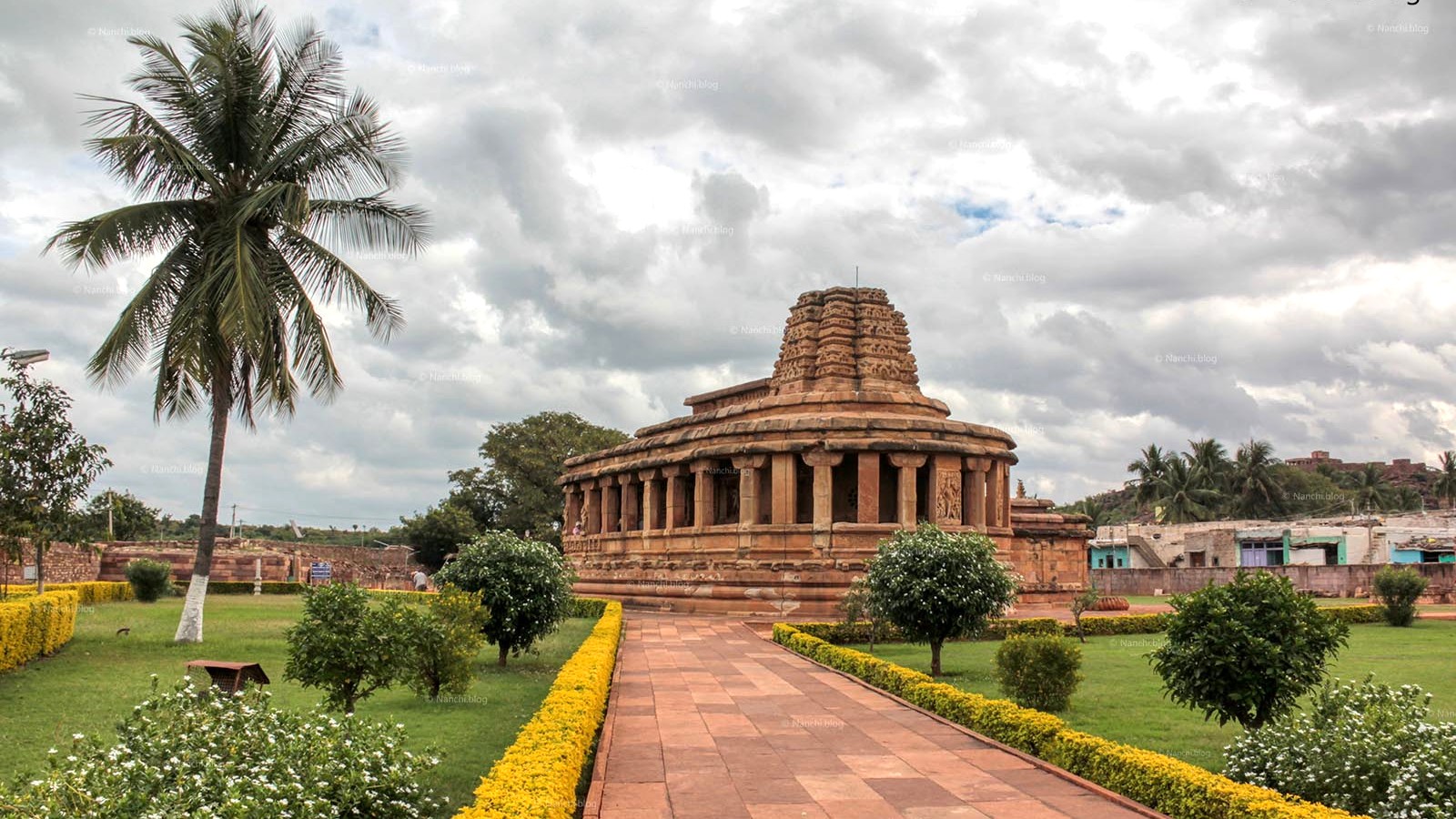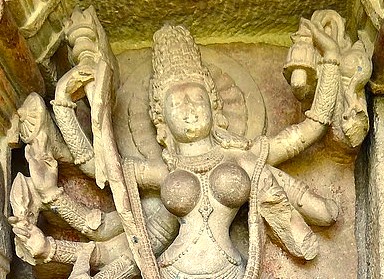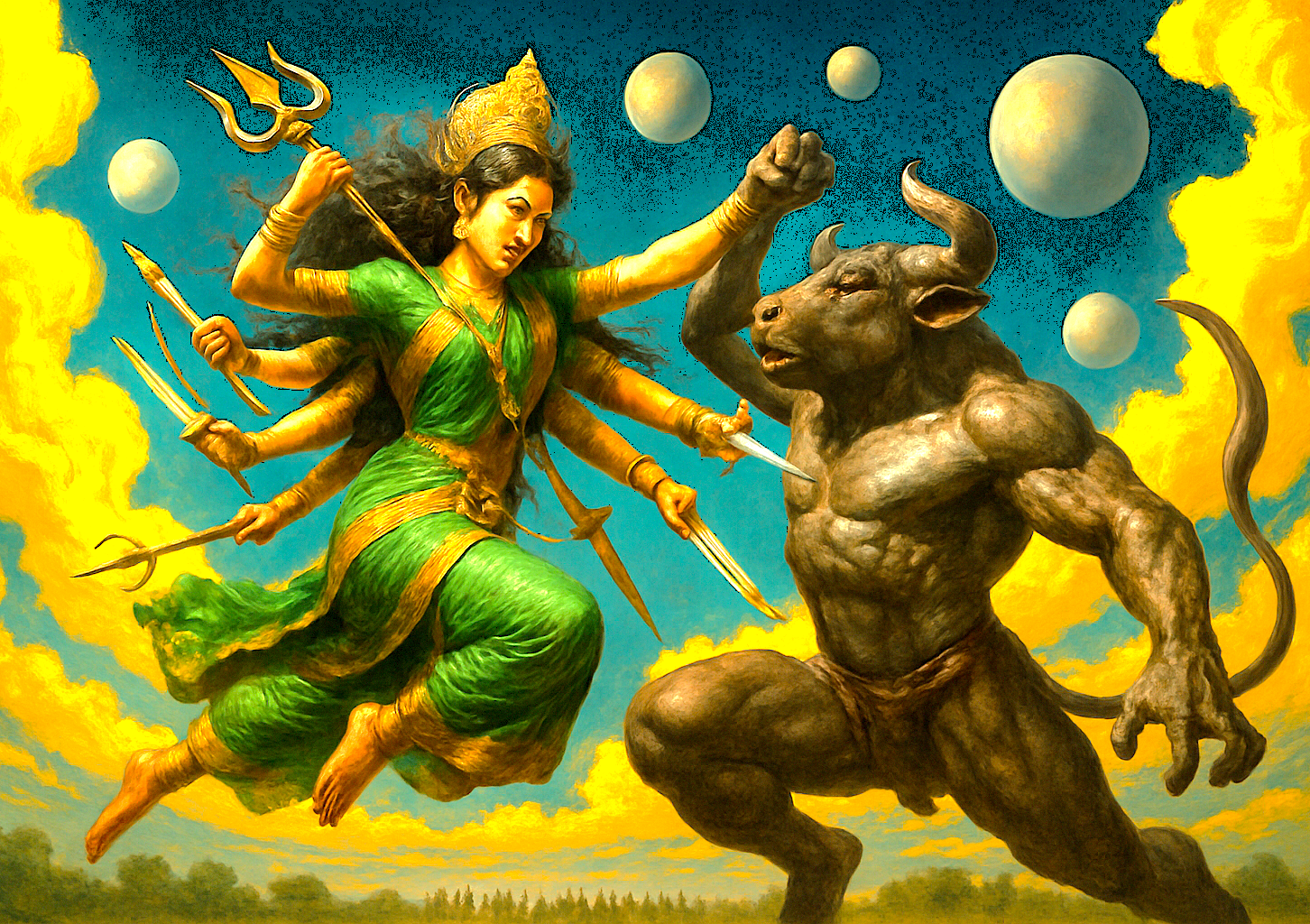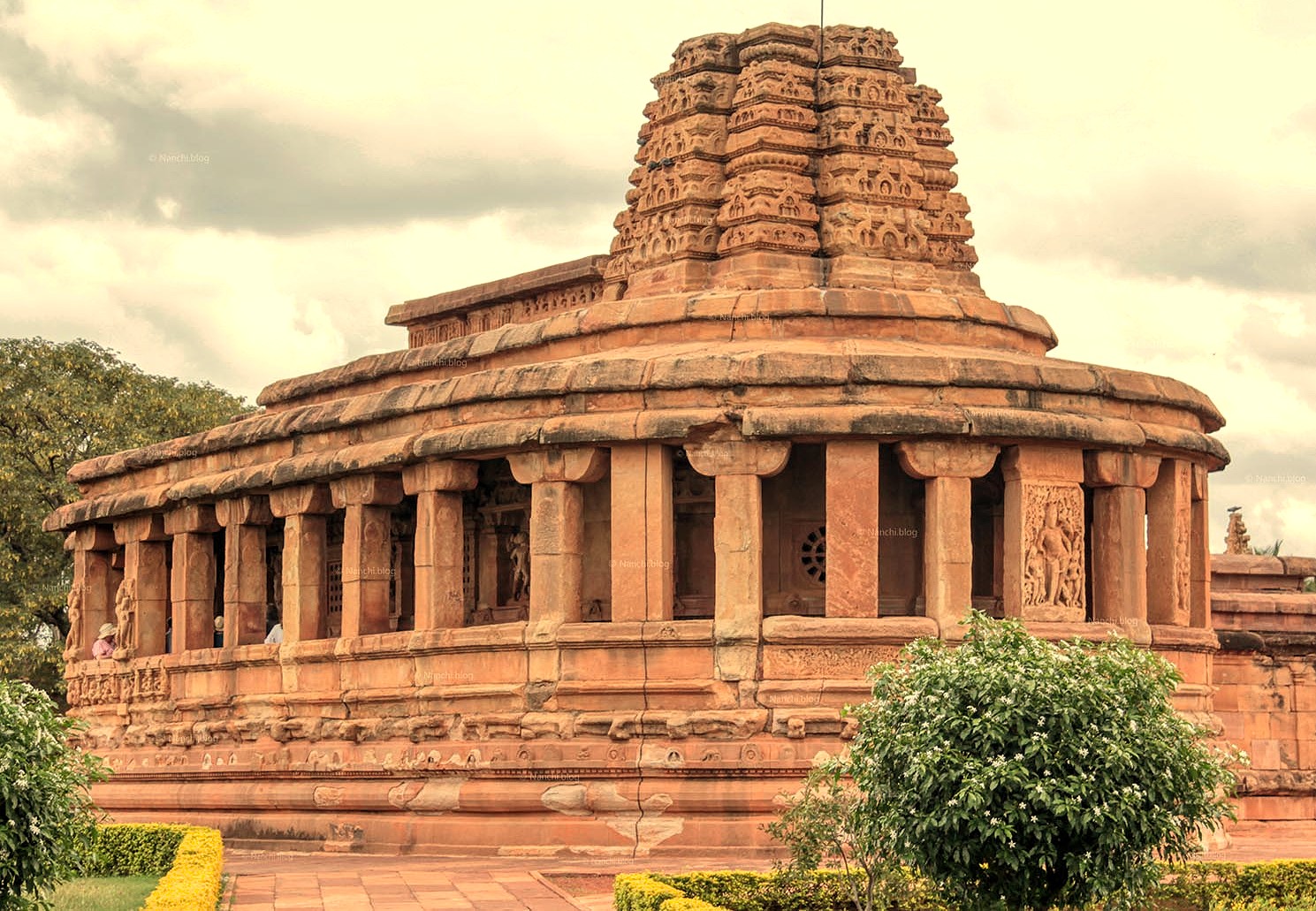Echoes of Ancient Lands
Durga Temple Aihole India
Mother Masala Tours
A Buddhist-Hindu Fusion Laboratory
Durga Temple Aihole India. In the historic town located in the Bagalkot district of Karnataka, the Temple emerges as an essential symbol of the region's extensive cultural legacy. Constructed around the 7th century CE, this temple is part of the larger group of monuments which was recognized as a Unesco World Heritage Site in 1986. The temple is dedicated to Goddess Durga and showcasesreveals the artistic advancements of the Chalukya Dynasty during its reign. The Chalukyas, beginning under the rule of Pulakeshin I in the early 6th century, made significant contributions to temple construction and sculpture.

Durga Temple Aihole India: Sacred Spaces
The temple features a large black stone idol of Durga, which represents her fierce form as she vanquishes the buffalo demon, Mahishasura. This symbolism is further enhanced through intricate depictions of various deities and lesser-known figures carved into the stone. The temple's layout itself articulates sacred space through the careful placement of shrines and sanctums, allowing for a rich experience of worship. Inside, you will find unique carvings that tell stories from Hindu legends, illustrating key moments in mythology and spiritual practice. The temple complex also includes smaller shrines and sacred water tanks, consistently interactive in local devotional practices.
Ancient Mosaics: Impeccable Craftsmanship

The craftsmanship displayed in the Temple is a testament to the skill of ancient artisans of the Chalukya Dynasty. Built during the 7th century CE, it embodies notable craftsmanship, particularly in its stone carvings and intricate designs that adorn the temple's exterior. One impressive feature is the sculptural reliefs depicting stories of Durga and other deities, which exhibit high levels of detail and craftsmanship. Among the artisans who might have worked on the temple was Madhava, a master sculptor from the Chalukyan period, whose work is celebrated for its elegance and storytelling capability.
The Pulse of the Local Community
Durga Temple Aihole India. The local community exhibits a deep-seated connection to their heritage and a warm spirit of hospitality. Even today, many in the area engage in traditional practices that honor their cultural identity. The atmosphere is notably peaceful, embodying a relaxed lifestyle that reflects the rhythms of rural living intertwined with spiritual devotion.
Capturing the Magic: A Photographic Haven

The temple in Aihole stands among flowing hills and patches of green, giving us plenty of spots for taking pictures. Each wall and pillar has carvings in stone that provide patterns, figures, and repeating designs, offering something new from every angle. The grounds around the temple allow us to change where we stand, so photos include both the building and the landscape behind it. Sometimes light falls in a way that shows more details on the carved surfaces or brings out the shades in the background.
A Culinary Journey: Savor the Flavour
One must try the local dish known as Rotti, a staple made from jowar (sorghum) flour. This flatbread is typically served alongside spicy chutneys and curries, providing a taste of the region's culinary traditions. To prepare this dish, jowar flour is mixed with water to form a dough, which is then rolled into thin rounds and cooked on a hot girdle. It is often enjoyed as part of a meal featuring lentils and seasonal vegetables. This dish is both healthy and nutritious, reflecting the agricultural practices of the area that emphasize local ingredients and traditions.
The Connection with the Gods

A prominent, architecturally unique sanctuary dedicated to Goddess Durga. She is profoundly revered as the divine symbol of shakti, or feminine power, embodying both strength and protection. At the heart of worship here is the powerful legend of her victorious battle against the formidable demon Mahishasura. This epic narrative, representing the ultimate triumph of good over evil, is central to the local faith and serves as a constant reminder of the importance of courage and resilience. Stories of how she offered divine guidance to devotees seeking fortitude in times of fear, reinforcing her role as a protective guardian.
Festivals of Devotion: Honouring the Sacred and the Divine
Durga Temple Aihole India. Aihole hosts several festivals that draw people together to celebrate their shared heritage. One important festival is Mahashivaratri, usually held in February or March, where devotees congregate at the Temple to honor Shiva. During this occasion, the atmosphere swells with activity as elaborate decorations adorn the temple. Local rituals include night-long vigils, where devotees engage in prayer and offerings. Key figures like priests lead these ceremonies, guiding the community in their devotion.
Serendipitous Meetings: Beyond the Main Path

Venturing into the lanes and alleys surrounding the Temple invites unexpected discoveries, taking one beyond the stone monuments to the living heart of local craftsmanship. Here, visitors might encounter local artisans deeply engaged in traditional practices passed down through generations. You may observe a potter deftly shaping clay, a weaver meticulously working a vibrant loom, or a carver patiently chipping at wood, echoing the skills of their ancestors. Nearby markets and stalls present opportunities to find unique handmade crafts, colorful textiles, and other regional goods.
Ancient Technologies: Sacred Sound, Geometry & Astrological Influences
Durga Temple Aihole India. The Temple exemplifies an understanding of sacred geometry and astrological principles in its design. The layout and orientation align with celestial bodies, ans Vastu Shashtra principles are appleid, enhancing the spiritual experience for worshippers. The construction materials, like local stone, not only contribute to the building's stability but also resonate with specific sound frequencies that enhance spiritual rituals. For instance, certain sacred chants may align with the Solefggio frequency of 528 Hz, known for its association with healing and transformation. Ancient builders incorporated elements of geometry to create harmonizing soundscapes within the temple.
Resilience and Renewal: Overcoming Adversity’s Challenges

Throughout its history, the community has faced various challenges that have shaped its identity. One event occurred in 1565, during the Battle of Talikota, when the Vijayanagara Dynasty suffered a critical defeat, leading to significant disruptions in the area. In the years following the battle, many local temples, including Durga, experienced neglect as the socio-political landscape shifted. However, the resilient spirit of the community prevailed. They soon began restoration efforts to repair and maintain the temples, demonstrating their dedication to preserving their cultural heritage.
Urban Legends: Strange Sightings, Myths and Mysteries
Aihole is home to numerous legends that embody the mystical elements of its culture. One tale speaks of the whispers of ancient priests heard at twilight near the Durga Temple, believed to be calling for devotees seeking guidance. Locals recount how these ethereal sounds provide comfort during times of turmoil, reinforcing their faith in the goddess's protection. Another widely shared story involves a hidden treasure said to be concealed within the temple’s walls, linked to tales of ancient kings who once ruled here.
No More Excuses, Even Your Cat Thinks You Should Go

Join us as we step into the enduring history of Durga Temple, uncovering the stories that are intertwined with this remarkable site. The temple reveals centuries of ancient craftsmanship, from the stonework to the intricate carvings that line every wall. Festivals fill the temple grounds with music and bright colors, offering moments to participate in the local traditions. Everyone is welcome to take part in the routines that have shaped daily life in this region. Exploring the pathways, we discover more about the ways the past and present meet around each corner.
Symphony of Generosity: Offerings from Wanderers to Residents
The interchange between locals and individuals exploring Aihole fosters a spirit of generosity that enhances both communities. By engaging with artisans, purchasing local crafts, or learning about their traditions, we contribute to the vitality of the local economy and culture. This relationship benefits both us and the residents, as shared experiences foster understanding and appreciation of the rich heritage of Aihole. Our presence supports the continuation of traditions, ensuring that the narratives and practices that define this unique region endure for generations to come.